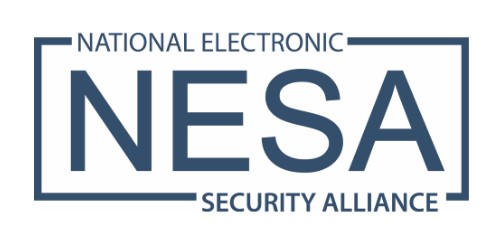
3.7.25 – Fast Company- BY Monica Hickey
Employee disengagement has become a major challenge for leaders. Here are five ways to boost morale and promote better energy.
During a time marked with high employee burnout, declining mental health, and stress attributed to the workplace, navigating the escalating crises of disengagement and quiet quitting has become a major issue for many employers and managers.
Based on recent industry research and firsthand experience, I recommend leaders address these challenges by developing proactive strategies that prioritize employee engagement, mental well-being, and creating collaborative work environments.
WHAT QUIET QUITTING IS—AND ISN’T
Quiet quitting is more than just completing assigned tasks; it’s a symptom of deeper workplace disconnection that reflects employees’ changing expectations and desires for meaningful work. While Gallup reports approximately half of all employees exhibit characteristics of quiet quitting—younger workers particularly affected—this trend reveals a critical opportunity for organizations to reimagine workplace engagement. The global pandemic fundamentally transformed work dynamics, particularly for younger professionals who experienced remote work and began questioning traditional workplace expectations.
This growing disengagement isn’t about employees doing the minimum, but about a fundamental misalignment between organizational cultures and workforce needs. Proactive employees seek more than just task completion; they want opportunities for growth, meaningful contributions, and a sense of purpose that goes beyond standard job descriptions. The challenge for leaders is to create environments that naturally inspire discretionary effort—where employees are motivated to contribute beyond their basic responsibilities because they feel valued, supported, and connected to the broader mission.
EMPOWERING TEAMS: A COMPREHENSIVE APPROACH TO WORKPLACE ENGAGEMENT
Based on research and insights from successful organizations, several key strategies have emerged for boosting employee morale and addressing workplace challenges following the return to an in-person or hybrid work model.
1. Support Employee Wellbeing
The pandemic has fundamentally transformed how organizations approach mental health and wellness. At my company, our holistic support strategy goes beyond traditional employee assistance programs to include:
- Proactive mental health resources
- Structured approaches to work-life balance
- Environments that prioritize employee mental wellness
- Monthly mandatory “team time off” on Fridays to provide three-day weekends
- Focus on sustainable productivity over constant work
By providing periodic mandatory days off, companies can address burnout and promote a healthier work-life balance. These initiatives challenge the traditional notion that constant work equals high performance, and instead, focuses on sustainable productivity and employee well-being. Such programs have shown promising results across industries, with employees reporting increased energy, reduced stress, and more creative problem-solving upon return.
2. Prioritize In-Person Team Events
With hybrid or remote work, it is important to prioritize human interaction within the workplace. The struggle of working remotely undermines the need to connect with other employees.
Twice a year, we host an all-company training summit to facilitate building strong connections with peers. Zoom fatigue and virtual meetings lack the relationship-building capabilities compared with in-person conversations. Whether through all-company events or planned happy hours, employees’ retention and engagement is reliant upon their relationships with others in the workplace.
advertisement
3. Reward And Incentivize Work
One way to boost engagement and productivity is to ensure proper recognition for employees’ work. Acknowledging an employee’s hard work is vital for increased morale and engagement.
At The Evoke Agency, we’ve implemented a structured approach to recognizing and rewarding employee contributions through a quarterly share of revenue policy. This innovative incentive program allows team members from all departments and career stages to earn a percentage of agency fees based on their performance and client contributions. This provides a tangible way to celebrate success and align individual achievements with company performance.
By incorporating this monetary incentive alongside regular feedback and professional development opportunities, we’ve created a comprehensive approach to employee motivation that goes beyond traditional recognition methods. This strategy not only boosts individual morale, but also encourages a collaborative and goal-oriented workplace culture.
4. Create Clear Professional Development Pathways
Progressive organizations are adopting individual development plans (IDPs) as a strategic approach to employee growth and engagement. These personalized roadmaps represent a shift from traditional performance reviews and focus on holistic professional development that benefits both employees and organizations.
Effective IDPs typically involve collaborative discussions between employees and HR or managers to create personalized development strategies that:
- Empower employees to actively shape their career trajectories
- Provide structured approaches to skill development
- Create transparent pathways for professional growth
- Align individual professional aspirations with organizational objectives
To support this development journey, we conduct quarterly reviews with each team member. Unlike static annual reviews, these modern development plans and check-ins are dynamic, living documents. Quarterly check-ins ensure that professional goals remain relevant, adapting to both individual growth and changing organizational needs. This approach transforms professional development from a compliance exercise into a meaningful dialogue about career progression and personal potential.
The most successful IDPs view employee development as a collaborative journey, not a top-down directive, ultimately creating more motivated, aligned, and committed teams.
DRIVING LONG-TERM WORK PERFORMANCE
In today’s ever-changing, dynamic workforce, employee retention and disengagement requires a multi-faceted approach. By fostering a positive work culture, prioritizing work-life balance, and promoting relationship building within the organization, leaders can help employees feel better supported. This can lead to more efficient and productive work environments.
ABOUT THE AUTHOR
Monica Hickey is Vice President of Growth at The Evoke Agency and co-founder of TheTease.com. Read Monica’s Executive Profile here. More
